A success for the first Vietnamese sale at Bonhams Cornette de Saint Cyr in Paris
PARIS.- Bonhams Cornette de Saint Cyr held its first successful sale in Paris dedicated to Vietnamese Modernity under the direction of specialist Joan Yip (Wednesday 14 December). The 67-lot sale achieved a total of €413,188 with more than 75% of lots sold, many of them well above their estimates.
A blend of Vietnamese and French traditions, the paintings in this sale explored not only the golden age of Vietnamese art (1930-1945) but also the pre-war and post-war period. Trained mostly at the prestigious Indochina School of Fine Arts in Hanoi (EBAI), the artists mastered European techniques and media - notably oil painting - and transposed brushwork, life drawing, plein air painting and a particular use of colour with their own artistic tradition, creating a Vietnamese Modernity.
A 1960 oil on silk painting entitled Peonies and Delphiniums by Lê Phổ secured the highest bid of the day at €120,075. Estimate: €50,000-70,000.
Lot 9. Lê Phổ (1907-2001), Les pivoines et les delphiniums, Vers les années 1960, signée Lê Phổ et en chinois (en bas à gauche); titrée (au revers), huile sur soie, 73 x 54 cm. Sold for €120,075 (Estimate: €50,000-70,000). © Bonhams 2001-2022
Provenance: Private collection, Paris, France
Sale in Lyon, France
Private Collection, Washington, D.C.
This work is accompanied with a certificate of authenticity issued by The Findlay Institute and dated 21 January 2022.
Inspired by the authentic rural world, Nguyen Phan Chanh favours earthy colours (brown, black, ochre) in his works, which he enhances with white. Return to the Village is a 1955 work that accurately depicts the return of soldiers to their villages after the victory of North Vietnam in 1954. Never seen before on the market and coming from the collection of Hungarian photographer Miklós Rév, this painting was sold for €40,695 (Estimate: €30,000 - 50,000).
Lot 1. Nguyễn Phan Chánh (1892-1984), Retour au village, 1955, signée Ng. Phan-Chanh, datée 8-1955 (en bas à droite); signé, inscrit et daté 24-3-1959 (au revers), encre et couleurs sur soie marouflée sur carton, 85 x 63 cm. Sold for €40,695 (Estimate: €30,000-50,000). © Bonhams 2001-2022
Provenance: Collection of Miklós Rév, acquired directly from the artist in 1959 in Vietnam
Thence by descent to the present owner
European private collection.
Note: During the years of the war against the French, the subject of his paintings, in a more realistic style, was imbued with the spirit of resistance to save the country. 'Returning to the village' is one of the compositions of this period.
Nguyễn Phan Chánh illustrates in this painting the return of fighters after the victory against the French army during the Indochina War of Independence.
One can imagine that the heroes here are a man, a woman, and a young girl. All three carry their bundles. The reunion must be touching as the woman is already carrying in her arms a small child from the village, or perhaps her own child brought into the world in the middle of the war? They are welcomed with joy by the villagers.
An older woman, with one hand resting on her stick, clasps the hero's arm with the other hand. Behind the applauding is an old man with a white beard, also leaning on his stick. Then a child in the foreground offers a banana to the son and we see in the background a mother carrying her child. Thus, all ages are present to welcome these war veterans. The perspective is respected.
This scene probably takes place at the entrance of the village by the sea on which a few sailboats are drawn in the distance. You can see a thatched house where the national flag flies as well as the sketch of a tree.
What appears at first glance is the harmony of warm colours - notice the absence of green and blue. Orange yellow predominates, offering a whole palette of gradients. This play of colours brings like a pastry joy regained. However, the absence of men, apart from the old man, perhaps the character on the far left of the canvas and the hero soldier, may suggest that the others are still fighting.
The artist has precisely detailed this scene. The smile of each one expresses both the joy but also the respect offered to these veterans, as well as the gesture of the hands.
To be noted also the delicacy of the features of the faces, the precision of the strands of hair. The clothes are perfectly designed until one notice what seems to be a patch stitched on the fighting woman's trousers, illustration that she returns from a painful period. And what does she wear around her neck, a necklace, a military license plate? In the details, we must note the turbans and humble black trousers worn by these women as well as the conical hats that thus sign the place of this scene. We are in Vietnam.
This painting recalls some lines from Hoang Trung Thông's poem1:
Your return brings joy back to the house
With songs and smiles
The small village regains its animation
Your return makes the alleys full of laughter
Accompanied with joy by the younger generations
Old mothers with tears in their eyes
Happy to see their children returning from the deep forest...
'Returning to the village' was formerly part of the collection of Miklós Rév. A renowned Hungarian photographer, born in 1906 in Sátoraljaújhely and died in Budapest in May 1998, Miklós Rév began his career as a photographer in 1923. In 1957, he was president of the Hungarian Association of Photographers, and visited Hanoi in 1959. His photographs offer an authentic perspective of life in the capital more than 60 years ago. During his visit, he met the artist Nguyễn Phan Chánh, whom he holds in high esteem in his book entitled 'The Art of Vietnam' (co-authored with journalist Imre Patkó), which recounts their observations of the arts and culture of Vietnam, with a nice passage on the artist whom he described as a humble man, wearing glasses and beard.
'Returning to the village' was acquired directly from the artist in 1959 by Miklós Rév, at the same time as 'Rice planters' (see Sotheby's Hong Kong, 31/3/2019, Lot 1102), then to the present owner by descent.
On the back of the painting, we can see the writing and signature of Nguyễn Phan Chánh, as well as the place and date: Hanoi 24 March 1959.
1 Hoang Trung Thông (1925-1993), one of the figures of Vietnamese revolutionary poetry.
Trong những năm kháng chiến chống Pháp, chủ đề tranh của ông đượm tinh thần kháng chiến cứu nước với bút pháp tả thực, xuất hiện nhiều nhân vật hơn, màu sắc được nới rộng một cách tươi sáng. "Về làng" là một những sáng tác trong thời kỳ ấy.
Nguyễn Phan Chánh minh họa bức tranh này sự trở về của những người chiến đấu sau chiến thắng chống lại quân đội Pháp trong cuộc chiến tranh giành độc lập của Việt Nam.
Người ta có thể tưởng tượng rằng những người anh hùng ở đây gồm ba người : nam thanh niên, một phụ nữ và một thiếu nữ. Cuộc hội ngộ hẳn rất xúc động vì người phụ nữ đã ôm trong vòng tay một đứa bé, cũng có thể đó chính là con trai của bà đã sinh ra giữa khốc liệt chiến tranh ? Họ được chào đón với niềm vui của dân làng.
Một người đàn bà lớn tuổi, chống gậy, tay kia siết chặt cánh tay của vị nữ chiến binh. Đằng sau những người phụ nữ vỗ tay là một vị bô lão với bộ râu bạc trắng, cũng đang chống gậy. Tiền cảnh, có đứa trẻ trao tặng một quả chuối và hậu cảnh là một người mẹ đang bế đứa con, mọi lứa tuổi đều có mặt để chào đón những con người trở về từ chiến tranh. Chúng tôi thấy luật xa gần được tôn trọng.
Cuộc hội ngộ có lẽ diễn ra ở lối vào của ngôi làng ven biển, chúng ta nhận thấy một số thuyền buồm thấp thoáng xa xa. Gần đó, một ngôi nhà lợp mái tranh bên cạnh gốc cây, nơi lá cờ Tổ quốc bay phất phới.
Ngay từ cái nhìn đầu tiên, chúng ta cảm nhận sự hài hòa của các gam màu nóng - lưu ý sự vắng mặt của màu xanh lá cây và xanh lam. Màu vàng cam chủ đạo mang đến niềm vui yên bình được tìm lại. Mặc dù vắng bóng đàn ông, ngoài ông già, và có lẽ nhân vật ở phía ngoài bên trái của bức tranh, cùng người lính trẻ, có thể cho biết rằng những người khác vẫn đang ở ngoài chiến trường.
Họa sĩ đã chi tiết hóa toàn cảnh một cách hoàn hảo. Nụ cười của mọi người nói lên niềm vui và sự kính trọng dành cho những người lính trở về. Ngay cả cử chỉ của những đôi bàn tay.
Cũng cần lưu ý sự tinh tế của các đặc điểm trên khuôn mặt, độ chính xác của các lọn tóc. Trang phục được trình bày rõ ràng, cho đến chi tiết mảnh vá trên quần của người phụ nữ, cho thấy cô ấy trở về từ một nơi nhọc nhằn gian khổ. Và dường như cô ấy đeo quanh cổ một vật thể như chiếc thẻ bài ? Những người phụ nữ đội khăn vấn tóc cũng như những chiếc nón lá cho ta biết địa điểm diễn ra quang cảnh này là đất nước Việt Nam.
Bức tranh hoàn toàn gợi lên những câu thơ của Hoàng Trung Thông1 :
Các anh về mái ấm nhà vui
Tiếng hát câu cười
Rộn ràng xóm nhỏ
Các anh về tưng bừng trước ngõ
Lớp đàn em hớn hở theo sau
Mẹ già bịn rịn áo nâu
Vui đàn con nhỏ rừng sâu mới về...
"Về làng" trước đây thuộc bộ sưu tập của Miklós Rév. Nhiếp ảnh gia nổi tiếng người Hungary, sinh năm 1906 ở Sátoraljaújhely và qua đời ở Budapest vào năm 1998, Miklós Rév bắt đầu sự nghiệp nhiếp ảnh gia vào năm 1923. Năm 1957, ông là chủ tịch Hội nhiếp ảnh gia Hungary, và đã có chuyến thăm Hà Nội vào năm 1959. Những bức ảnh của ông trong thời gian này cho thấy một góc nhìn chân thực về cuộc sống ở thủ đô hơn 60 năm trước. Trong chuyến đi của mình, ông đã gặp họa sĩ Nguyễn Phan Chánh, người mà ông rất quý trọng, được miêu tả là một người khiêm tốn, đeo kính và để râu (trong cuốn sách có tựa đề "Nghệ thuật Việt Nam" / L'Art du Viet-nam, đồng tác giả với nhà báo Imre Patkó).
"Về làng" được mua trực tiếp từ họa sĩ vào năm 1959, cùng một lúc với tác phẩm "Cấy lúa" (Cf. Sotheby's ngày 31/3/2019), sau đó truyền đến con cháu trong dòng dõi, là sở hữu chủ hiện tại.
Ở mặt sau của bức tranh, chúng ta đọc được thủ bút và chữ ký của Nguyễn Phan Chánh, cũng như nơi chốn và ngày tháng : Hà Nội 24/3/1959.
1 Hoàng Trung Thông (1925-1993), một gương mặt thơ tiêu biểu cho nền thơ cách mạng Việt Nam.
From the collection of a European diplomat posted in Vietnam in the 1980s who bought it directly from the artist in November 1986, View of the Red River Delta attributed to Hoang Tich Chu doubled its estimate by reaching the price of €31,875 (Estimate: €15,000-20,000). The artist uses a rich palette of colours here, particularly blue and blue-green which replace the traditional red, highlighted with gold leaf and eggshells.
Lot 16. Hoàng Tích Chù (1912-2003), Vue du delta du fleuve rouge, 1985, signé Tich, daté 5-85, avec inscription MON NGAI SÔNG DA (en bas à droite), laque, coquille d'oeuf et décor or sur panneau en bois, 60.5 x 91 cm. Sold for €31,875 (Estimate: €15,000-20,000). © Bonhams 2001-2022
Provenance: Formerly in the collection of a European diplomat in Vietnam in the 1980s, acquired directly from the artist in November 1986.
Note: Born in 1912 in Phu Luu village, Hoang Tich Chu graduated from the Fine Arts School of Indochina in 1941 and then worked as a professor at Hanoi University of Fine Arts until 1969. One year later, he was appointed director of Hanoi Academy of Fine Arts, where he stayed until his retirement. He was one of the founders of the Vietnam Fine Arts Association. Highly respected in Vietnam, his works were frequently and widely exhibited with national and international recognition.
Hoang Tich Chu was a famous lacquer painter, he reinvented the art of lacquer painting, which had traditionally been used for decorative objects. He developed and adapted the technique using a European-influenced vision based on teachings he received from the Fine Arts School of Indochina. His lacquer paintings are rich in details and lyrical. The colour palette he used is vibrant and complements the traditional red, thus creating new visual effects.
Bay and river landscapes were a very popular and highly appreciated theme in Vietnamese lacquer paintings, often reproduced by artists or workshops. View of the Red River Delta presented in the sale was created in 1985, the artist was at the peak of his realism period starting from 1954. Being a true admirer of the nature of Vietnam, combined with his love of modern art and nationalistic painting style, the artist brought a new perspective on this scene near Hanoi that he was familiar with. Here the traditional red has been replaced by blue and green-blue, the rocks detailly presented in different tones and shades highlighted with tiny bits of eggshells. Adding to the realistic rendering of the painting, the sky and some areas are covered with gold, creating a dream-like reality.
Works by French artists were also successful: Gaston Roullet's View of Tourane in Vietnam, 1886 quadrupled its low estimate with a price of €16,675. (Estimate: €4,000-6,000) and Henri Mège's Retour de pêche dans la lagune achieved €15,300 (estimate: €9,000-12,000).
Lot 48. Gaston Roullet (1847-1925), Vue de Tourane au Vietnam, 1886, signé Gaston Roullet, daté 1886 et situé à Tourane (en bas à gauche), huile sur panneau en bois, 30.5 x 50.5 cm. Sold for €16,675 (Estimate: €4,000-6,000). © Bonhams 2001-2022
Provenance: French private collection.
Note: Gaston Roullet received the traditional title of the Peintre official de la Marine (Official Painter of the French Navy) in 1885. This prestigious title was awarded since the 19th century to traveller painters working in colonies and remote countries whose works reflected the French colonial expansion. Roullet joined the military campaigns of Tonkin in 1885 and 1886 with an artistic mission to create paintings and drawings in Indochina. His work from that period recorded landscapes of the area with a remarkable quality of execution and a very accurate technique inherited from the traditional European oil painting style of the 19th century.
View of Tourane in Vietnam represents the seascape in Tourane (Da Nang). Some boats sailing on the sea, two typical Vietnamese junks near the seashore. A fisherman of the bigger junk is exchanging with another person on the smaller junk. Some local people resting on the beach. The foreground depicts a fishermen's village. The Annamese mountains on the background are contrasted by the day light and add depth to the composition.
Gaston Roullet's painting is timeless and sensitive, it still amazes us today, how he captures the beauty imbued in the monotony of daily routine near the seashore through the subtle shades of his colour palette and the elegance of his brushstrokes.
Lot 47. Henri Mège (1904-1984), Retour de pêche dans la lagune, Centre Vietnam, Vers les années 1950 à 1960, signée Henri Mège (en bas à droite); signée et titrée (au revers), huile sur toile, 40 x 80 cm. Sold for €15,300 (Estimate: €9,000-12,000). © Bonhams 2001-2022
Note: Born in 1904 in Romans-sur-Isère, in the region of the Alps. Henri Mège was almost entirely self-educated. It was by observing his mother's painting sessions and visiting museums with her, he learnt how to paint. Later, Henri Mège initiated his career in the French cavalry as an officer, which took him to Indochina in 1931. There, the artist was acquainted with the renowned Vietnamese painter Mai Trung Thu. They became very close friends and inspired each other. He was also a drawing teacher at the French High School of Saigon from 1950-1956, therefore a frequent contributor, and friend of the artistic elite in the country.
Joan Yip, Bonhams Cornette de Saint Cyr Specialist in Indian, Himalayan and South East Asian Art, said: "I am very pleased by the success of the sale which demonstrated a strong appetite among both Vietnamese and International collectors for the art of this pivotal period in the history in Vietnamese painting. Our next sale will take place in the spring.”
Highlights of the sale included:
Lot 3. Phạm Văn Đôn (1917-2000), Famille avec colombe, 1958, signé Ph.V.Don (en bas à droite), laque sur panneau en bois, 45.5 x 61 cm. Sold for €35,655 (Estimate: €3,500 - 5,500). © Bonhams 2001-2022
Provenance: Collection of Miklós Rév, acquired in Vietnam between 1959-1960
Thence by descent to the present owner
European private collection.
Note: 'Family with dove' by Phạm Văn Đôn, a beautiful lacquer of dimension 45.5 x 61 cm, which describes a happy family in the harmony of gold tone on a translucent red and dark orange background. The mosaic of eggshells encrusted on the dove causes a strong effect of luminous...
"Gia đình và bồ câu" của Phạm Văn Đôn, một bức tranh sơn mài tuyệt đẹp với kích thước 45.5 x 61 cm, diễn tả khung cảnh êm ấm của một gia đình hạnh phúc với sắc vàng hài hòa trên nền son đỏ. Vỏ trứng cẩn lên chim bồ câu tạo hiệu ứng linh động nhẹ nhàng...
Lot 13. Huỳnh Phương Đông (1925-2015), Temple of Lăng Ông Bà Chiểu, 1987, signé Huynh Dong, daté 87 (en bas à droite), laque et décor or sur bois, en trois panneaux, 64 x 122 cm. Sold for €14,025 (Estimate: €4,000-6,000). © Bonhams 2001-2022
Provenance: European private collection, acquired from Gallery Nguyen, Hanoi between 2007-2009.
Note: Born in 1925 in Binh Hoa-Gia Dinh (present-day Ho Chi Minh City). After graduating from the Gia Dinh Fine Arts School in 1945, he joined the army for the First Indochina war (1946-1954). After the Dien Bien Phu Victory in 1954, he continued his studies at the Hanoi Fine Arts College (1957-1963). Participated in the final thirty years of Vietnam's long struggle for independence. He distinguished himself as a combat artist, creating sketches and drawings of battle scenes.
Located not far away from a crowded market in Ho Chi Minh city, Lang Ong Ba Chieu is the ancient tomb of General Le Van Duyet, a high-ranking mandarin of the Nguyen Dynasty, who laid the groundwork for the peace and development of Ho Chi Minh City. The tomb was erected after his death in 1832 to commemorate his significant contributions to the establishment of both the city and locals. In this painting, families and friends in their traditional costumes are enjoying their time in the meadow next to Lang Ong Ba Chieu. Some are gathered under a tree, a mother in a red ao dai walking with her two kids, a man posing for a photo in front of the temples, others simply strolling.
Huynh Phuong Dong is well known for his battlefield sketches, where each character, each scene and each battle is rendered in great detail and brings to the viewers a feeling of being present at the places where the events are taking place. This painting was created in 1987, one year after Vietnam opened up to the world, with a series of economic and political reforms. The artist chose this very significant childhood place to depict with elegance and finesse a Vietnam in the time of peace, populated by people with great love and hope for their country. Here the vibrant traditional lacquer red applied underneath the gilding doesn't represent the violence, instead it gives a warm feel to the gold and enhances the whole picture with the loose brushstrokes.
Lot 31. Đỗ Xuân Doãn (b. 1937), Scène nocturne de quartier, Vers 2006, signé D X Doan (en bas à droite), laque sur bois, 82 x 62 cm. Sold for €10,200 (Estimate: €3,000-5,000). © Bonhams 2001-2022.
Provenance: Acquired from Ben Thanh Art & Frame, Ho Chi Minh City between 2007-2009.
Note: Born in 1937 in Hanoi, Do Xuan Doan graduated from the Fine Arts College of Hanoi in 1961 and was a student of Nguyen Gia Tri.
Do Xuan Doan's paintings are inspired by his surroundings, featuring ancient houses, old streets, and common people. The themes of his paintings were taken from everyday life scenarios, which reflect a kind of simplicity and sincerity. Do Xuan Doan enhances his paintings with shimmering colour palette and bold brushstrokes.

/https%3A%2F%2Fprofilepics.canalblog.com%2Fprofilepics%2F1%2F0%2F100183.jpg)
/https%3A%2F%2Fstorage.canalblog.com%2F03%2F02%2F119589%2F96711876_o.jpg)
/https%3A%2F%2Fstorage.canalblog.com%2F11%2F31%2F119589%2F94773502_o.jpg)
/https%3A%2F%2Fstorage.canalblog.com%2F20%2F83%2F119589%2F94772815_o.jpg)
/https%3A%2F%2Fstorage.canalblog.com%2F26%2F72%2F119589%2F75604929_o.jpg)
/https%3A%2F%2Fstorage.canalblog.com%2F59%2F60%2F119589%2F26458628_o.jpg)



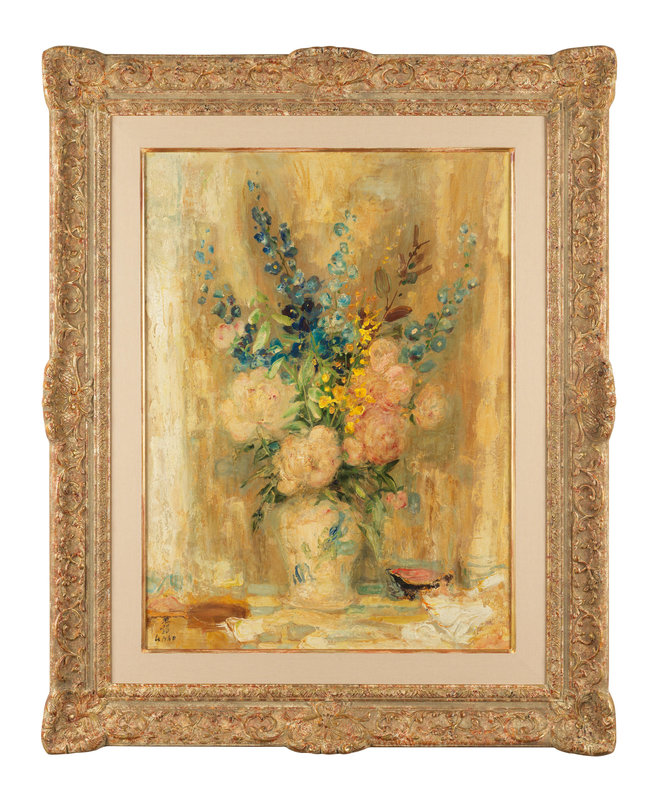
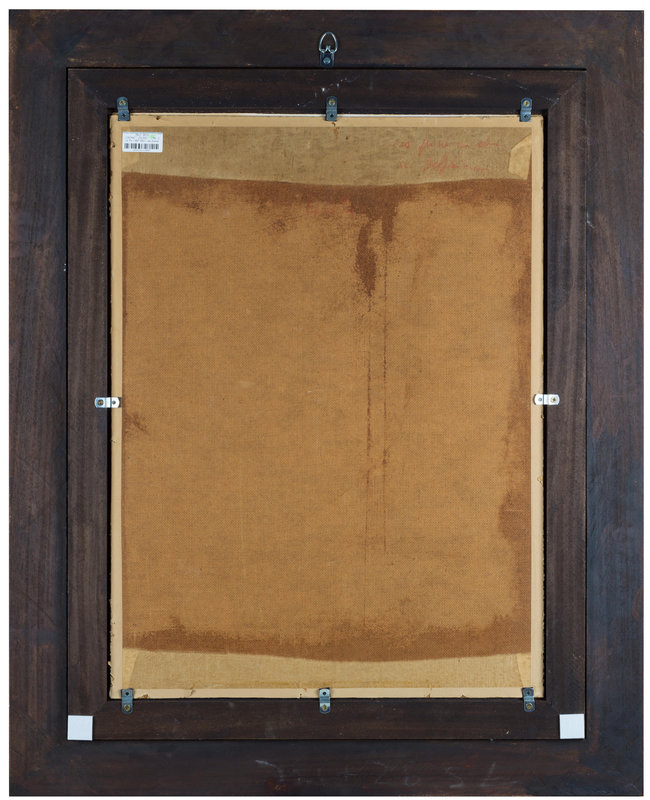





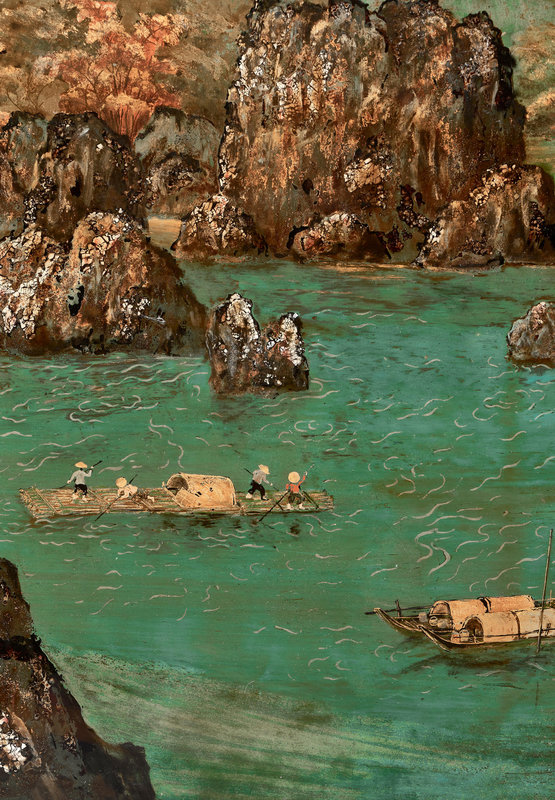



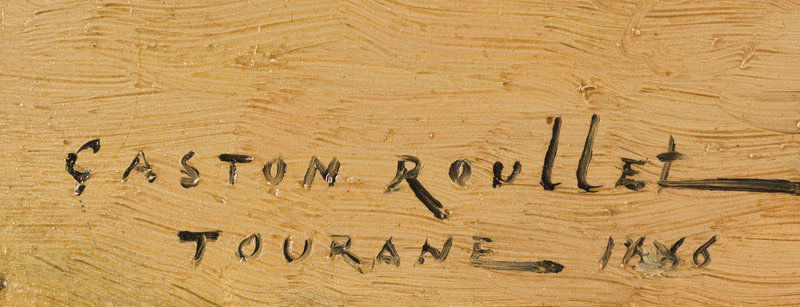



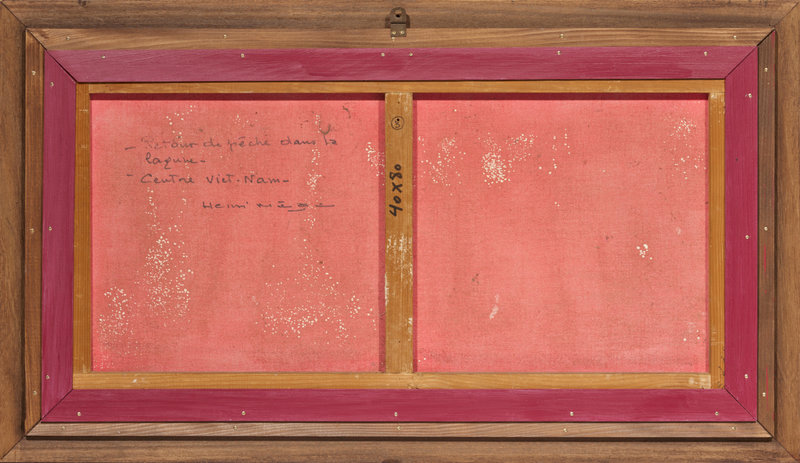














/http%3A%2F%2Fstorage.canalblog.com%2F49%2F90%2F119589%2F95924387_o.jpg)
/http%3A%2F%2Fstorage.canalblog.com%2F41%2F92%2F119589%2F95924243_o.jpg)
/http%3A%2F%2Fstorage.canalblog.com%2F19%2F97%2F119589%2F95924135_o.jpg)
/image%2F1371349%2F20240418%2Fob_ac5c4c_telechargement.jpg)